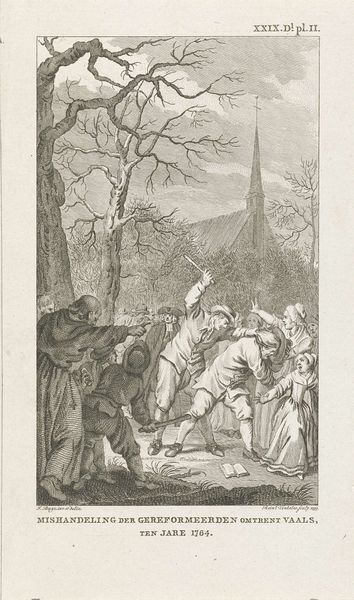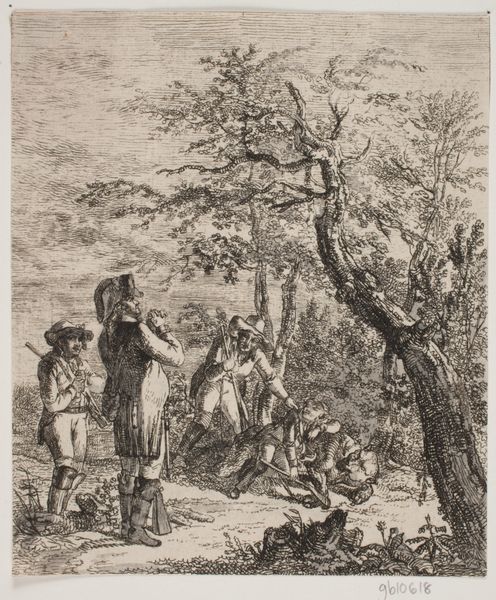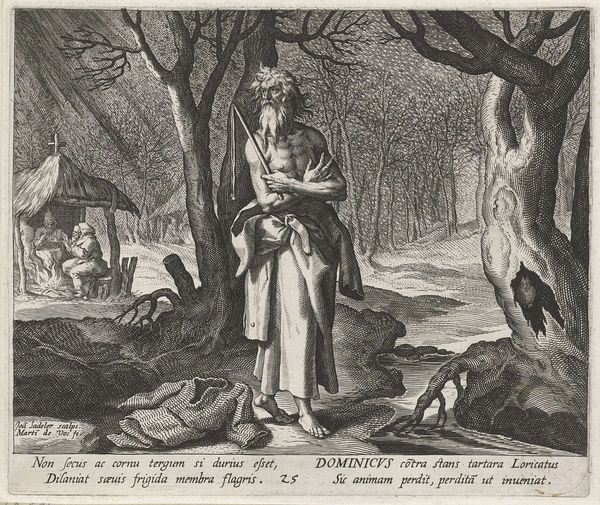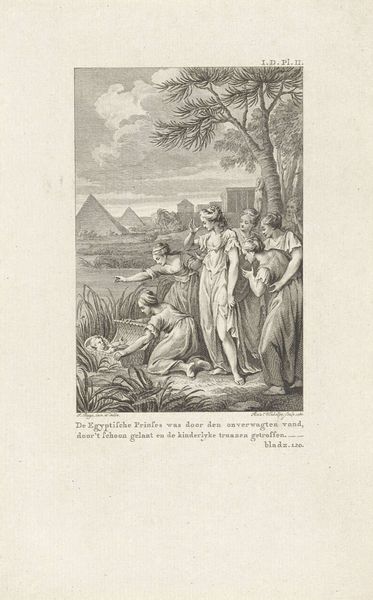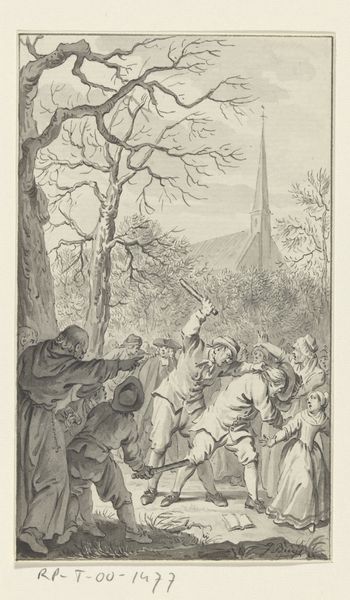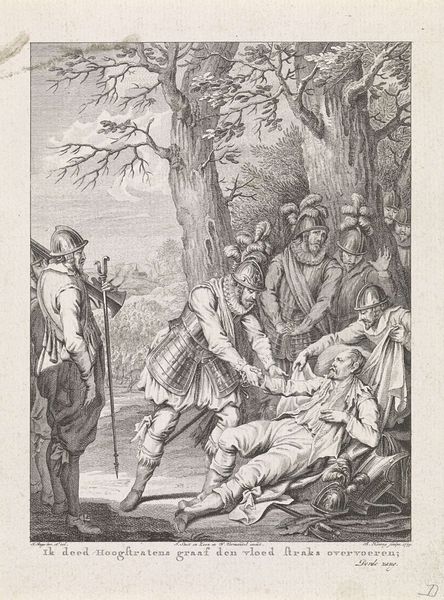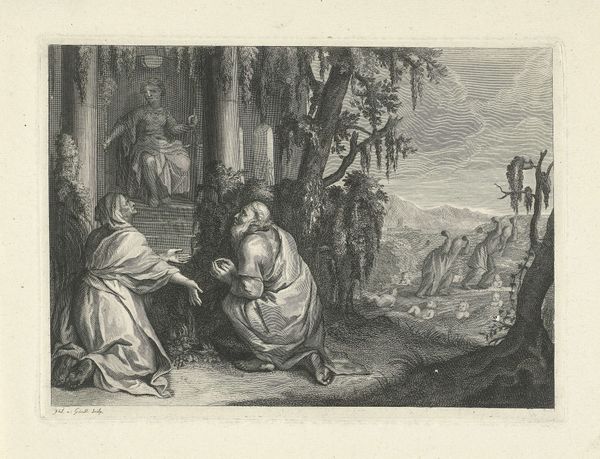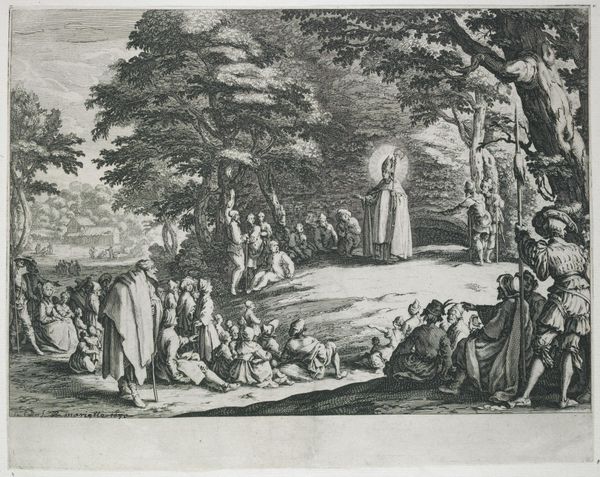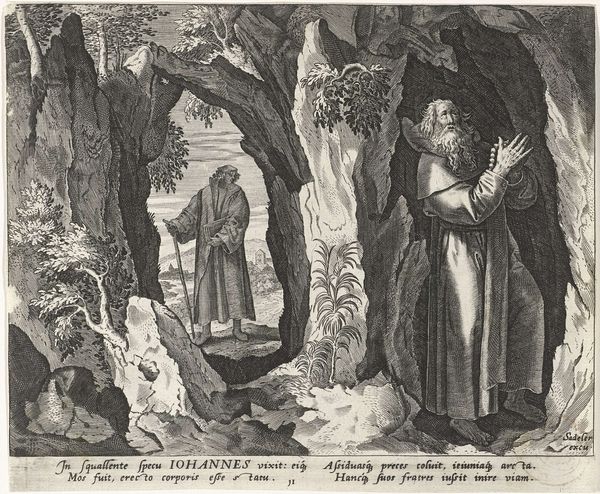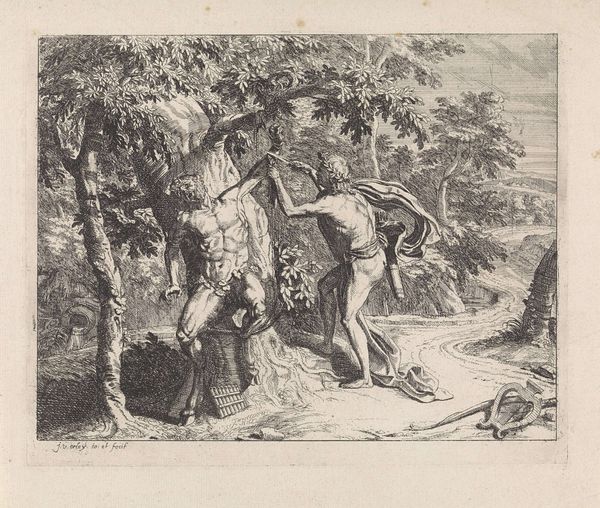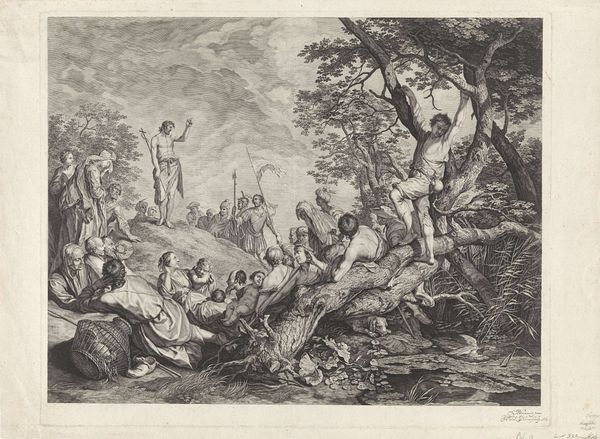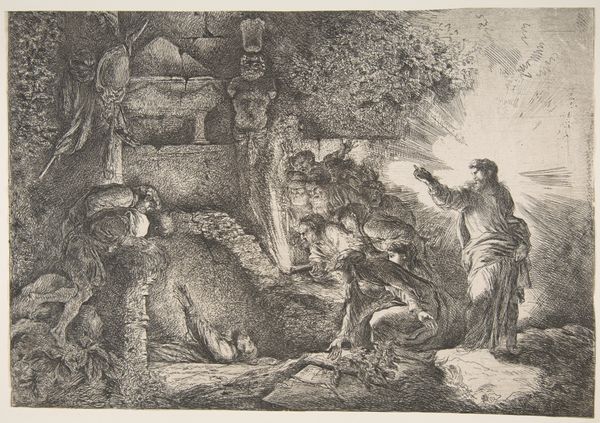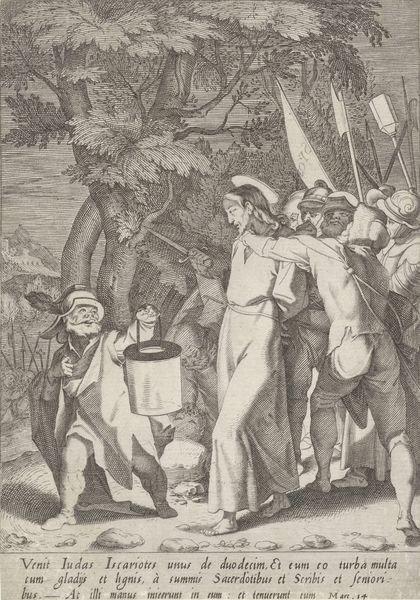
Bonifatius laat het heilige woud omhakken, ca. 740 1853 - 1861
0:00
0:00
#
quirky sketch
#
pen sketch
#
pencil sketch
#
old engraving style
#
personal sketchbook
#
sketchwork
#
pen-ink sketch
#
sketchbook drawing
#
storyboard and sketchbook work
#
sketchbook art
Dimensions: height 136 mm, width 208 mm
Copyright: Rijks Museum: Open Domain
Editor: This is "Bonifatius laat het heilige woud omhakken, ca. 740" by Christiaan Lodewijk van Kesteren, made between 1853 and 1861. It's currently housed at the Rijksmuseum. It's got a really old storybook feel, doesn't it? What do you make of it? Curator: Indeed. This engraving depicts Boniface, an 8th-century missionary, ordering the felling of a sacred grove. The visual language employed—consider the robust oak, central and dominating—becomes a battleground of ideologies. Doesn't the image invite contemplation on the tension between established pagan belief and the imposition of Christianity? Editor: Definitely, the scale of the tree compared to the figures creates a sense of it being a sacred space. What's the significance of depicting this event so much later, in the 19th century? Curator: Excellent question! Think of 19th-century Europe: rising nationalism, the search for cultural origins, and religious debates. An image like this evokes a narrative of triumph, specifically of Christianity, resonating powerfully with the nationalistic fervor of the time. Observe the figure of Boniface – his posture, the detail given to his garments, all reinforcing his authority and divine mandate. How does this construction of Boniface align with or challenge modern perspectives on colonialism and cultural conversion? Editor: That is a fascinating perspective; I hadn't considered the impact of its historical context. Thinking about it now, this work can be seen as more than a religious statement. It has nationalistic undercurrents too. Curator: Precisely! The symbolic act of cutting down the tree then morphs from a simple act of religious conversion to a broader claim about cultural identity. Consider too, the act of deforestation as a kind of primal disruption. Understanding the work through these lenses illuminates a continuity in visual and cultural language. Editor: I see what you mean. I’ll never look at a simple historical depiction the same way! Curator: Hopefully, you are also more attentive to our continuous reshaping of symbols. Thank you for this dialogue.
Comments
No comments
Be the first to comment and join the conversation on the ultimate creative platform.
